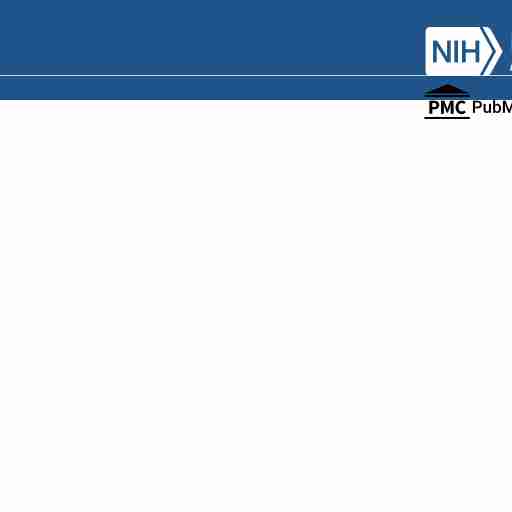As a livestock farmer, you want to ensure that your animals are healthy and well-fed. One of the ways to achieve this is by providing them with high-quality feed. However, traditional dry feed can be limiting in terms of nutrient availability and palatability. This is where liquid feed comes in.
M&M Liquid Feed is a company that specializes in manufacturing liquid feed supplements for livestock. Their products are designed to enhance the nutritional value of traditional feed and provide additional benefits such as improved digestion, increased milk production, and better overall health.
Liquid feed offers several advantages over traditional dry feed:
M&M Liquid Feed offers a range of products designed to meet the unique nutritional needs of different types of livestock:
Here are some common questions about M&M Liquid Feed:
Liquid feed is a type of animal feed that comes in a liquid form. It is typically made by mixing dry ingredients with water or other liquids to create a nutrient-rich solution that can be easily consumed by animals.
M&M Liquid Feed products can be added directly to your animal's drinking water or mixed with their regular feed. Follow the instructions on the product label for best results.
M&M Liquid Feed products are made from high-quality ingredients and are safe for use in livestock. However, it's always a good idea to consult with your veterinarian before making any changes to your animal's diet.
Yes, M&M Liquid Feed products are approved for use in organic farming and are certified by the Organic Materials Review Institute (OMRI).
M&M Liquid Feed offers a range of liquid feed supplements designed to improve the nutritional value and palatability of traditional dry feed. Their products are formulated to meet the unique needs of different types of livestock and can help enhance overall health, growth, and performance. Consider incorporating M&M Liquid Feed into your animal's diet for optimal nutrition and health.

The control diet contained steam-flaked corn (SFC) and the other diets contained either finely (FGC; 0.8 mm) or coarsely ground corn (CGC; 1.9 mm), ... An official website of the United States government The .gov means it’s official. Federal government websites often end in .gov or .mil. Before sharing sensitive information, make sure you’re on a federal government site. Access keys NCBI Homepage MyNCBI Homepage Main Content Main Navigation Subject: 1 selected item: 21605774 - PubMed Name must be less than 100 characters Would you like email updates of new search results? Saved Search Alert Radio Buttons Send even when there aren't any new results Create a file for external citation management software Name must be less than 100 characters J Dairy Sci . 2011 Jun;94(6):3045-53. Corn grain and liquid feed as nonfiber carbohydrate sources in diets for lactating dairy cows M L Eastridge 1 , A H Lefeld, A M Eilenfeld, P N Gott, W S Bowen, J L Firkins 1 Department of Animal Sciences, The Ohio State University, Columbus 43210, USA. Eastridge.1@osu.edu Corn grain and liquid feed as nonfiber carbohydrate sources in diets for lactating dairy cows M L Eastridge et al. J Dairy Sci. 2011 Jun. J Dairy Sci . 2011 Jun;94(6):3045-53. M L Eastridge 1 , A H Lefeld, A M Eilenfeld, P N Gott, W S Bowen, J L Firkins 1 Department of Animal Sciences, The Ohio State University, Columbus 43210, USA. Eastridge.1@osu.edu Interactions of sources and processing methods for nonstructural carbohydrates may affect the efficiency of animal production. Five rumen-cannulated cows in late lactation were placed in a 5 × 5 Latin square design and fed experimental diets for 2 wk. In the production trial, 54 cows were fed the experimental diets for 12 wk beginning at d 60 in milk. Diets contained 24% corn silage and 22% hay, averaging 20% alfalfa and 2% grass but being adjusted as needed to maintain dietary concentrations of 36% neutral detergent fiber. The control diet contained steam-flaked corn (SFC) and the other diets contained either finely (FGC; 0.8 mm) or coarsely ground corn (CGC; 1.9 mm), factorialized with or without 3.5% liquid feed (LF). The LF diets provided 1.03% of dietary dry matter as supplemental sugar. The FGC decreased rumen pH and concentration of NH(3)N compared with CGC. The SFC and FGC tended to increase the molar percentage of ruminal propionate and decrease the acetate:propionate ratio. The LF increased molar percentage of ruminal butyrate with FGC but not CGC. The LF tended to decrease starch digestibility with the CGC but not with the FGC. As expected, the SFC and FGC increased total tract starch digestibility. The DMI and milk yield were similar among dietary treatments. Compared with ground corn diets, the SFC tended to decrease milk fat percentage; thus, 3.5% fat-corrected milk and feed efficiency were decreased with SFC. The LF decreased milk protein percentage but had no effect on milk protein yield. The SFC compared with dry ground corn decreased the concentration of milk urea nitrogen. Sugar supplementation using LF appeared to be more beneficial with FGC than CGC. Increasing the surface area by finely grinding corn is important for starch digestibility and optimal utilization of nutrients.

PTFE Tubing Assembly for AA, ICP-OES, ICP-MS, FIAS-200 and FIMS from PerkinElmer. 700mm. From our full range of essential accessories for the FIAS 100. phantomjs://platform/webpage.js:286 in _onPageOpenFinished phantomjs://platform/webpage.js:286 in _onPageOpenFinished We are now two standalone organizations Life Sciences & Diagnostics and Analytical & Enterprise Solutions We are now two standalone organizations A Life Sciences and Diagnostics business focused on enabling scientists and healthcare professionals to advance research, discovery and detection to improve global health Analytical & Enterprise Solutions An Analytical and Enterprise solutions business, including leading OneSource laboratory services, focused on accelerating scientific outcomes 1.0 mm I.D. PTFE Liquid Rinse Feed Tube, 700 mm This PTFE tubing assembly is used as a liquid rinse feed tube to deliver the solvent from the bottle to the apparatus. The tubing is 700 mm in length and has a blue screw fitting on one end and a weight at the other end to ensure that the solvent pickup is from bottom of the bottle. Part NumberList PriceYour Price This product is now supported through a new legal entity. Request More Information Add To Cart Analytical & Enterprise Solutions © 1998 - 2023 PerkinElmer Inc. All Rights Reserved

Dec 8, 2021 ... ... routine analysis of water-soluble vitamins in veterinary feed premix. ... and solvent and (b) 5 mM sodium hexanesulfonate in methanol. An official website of the United States government The .gov means it’s official. Federal government websites often end in .gov or .mil. Before sharing sensitive information, make sure you’re on a federal government site. Access keys NCBI Homepage MyNCBI Homepage Main Content Main Navigation Subject: 1 selected item: 35153396 - PubMed Name must be less than 100 characters Would you like email updates of new search results? Saved Search Alert Radio Buttons Send even when there aren't any new results Create a file for external citation management software Name must be less than 100 characters Vet World . 2021 Dec;14(12):3084-3090. doi: 10.14202/vetworld.2021.3084-3090. Epub 2021 Dec 8. Development of a rapid and reliable high-performance liquid chromatography method for determination of water-soluble vitamins in veterinary feed premix Md Zahangir Hosain 1 , S M Shariful Islam 1 , Md Mostofa Kamal 1 1 Quality Control Laboratory, Department of Livestock Services, Savar, Dhaka-1343, Bangladesh. DOI: 10.14202/vetworld.2021.3084-3090 Development of a rapid and reliable high-performance liquid chromatography method for determination of water-soluble vitamins in veterinary feed premix Md Zahangir Hosain et al. Vet World. 2021 Dec. Vet World . 2021 Dec;14(12):3084-3090. doi: 10.14202/vetworld.2021.3084-3090. Epub 2021 Dec 8. Md Zahangir Hosain 1 , S M Shariful Islam 1 , Md Mostofa Kamal 1 1 Quality Control Laboratory, Department of Livestock Services, Savar, Dhaka-1343, Bangladesh.
Attempting to configurable attribute of unconfigurable property. Attempting to configurable attribute of unconfigurable property. Attempting to configurable attribute of unconfigurable property. Attempting to configurable attribute of unconfigurable property. Attempting to configurable attribute of unconfigurable property.

The infectious dose of ASFV in plant-based feed or liquid consumed ... Minuzzi-Souza TTC, Nitz N, Cuba CAC, Hagström L, Hecht MM, Santana C, et al. Access keysNCBI HomepageMyNCBI HomepageMain ContentMain Navigation Emerg Infect Dis. 2019 May; 25(5): 891–897. doi: 10.3201/eid2505.181495 PMCID: PMC6478231PMID: 30761988 Infectious Dose of African Swine Fever Virus When Consumed Naturally in Liquid or Feed Megan C. Niederwerder, Ana M.M. Stoian, Raymond R.R. Rowland, Steve S. Dritz, Vlad Petrovan, Laura A. Constance, Jordan T. Gebhardt, Matthew Olcha, Cassandra K. Jones, Jason C. Woodworth, Ying Fang, Jia Liang, and Trevor J. Hefley African swine fever virus (ASFV) is a contagious, rapidly spreading, transboundary animal disease and a major threat to pork production globally. Although plant-based feed has been identified as a potential route for virus introduction onto swine farms, little is known about the risks for ASFV transmission in feed. We aimed to determine the minimum and median infectious doses of the Georgia 2007 strain of ASFV through oral exposure during natural drinking and feeding behaviors. The minimum infectious dose of ASFV in liquid was 100 50% tissue culture infectious dose (TCID50), compared with 104 TCID50 in feed. The median infectious dose was 101.0 TCID50 for liquid and 106.8 TCID50 for feed. Our findings demonstrate that ASFV Georgia 2007 can easily be transmitted orally, although higher doses are required for infection in plant-based feed. These data provide important information that can be incorporated into risk models for ASFV transmission. Keywords: African swine fever virus, ASFV, oral dose, minimum infectious dose, median infectious dose, feed, pigs, natural consumption, viruses, vector-borne infections